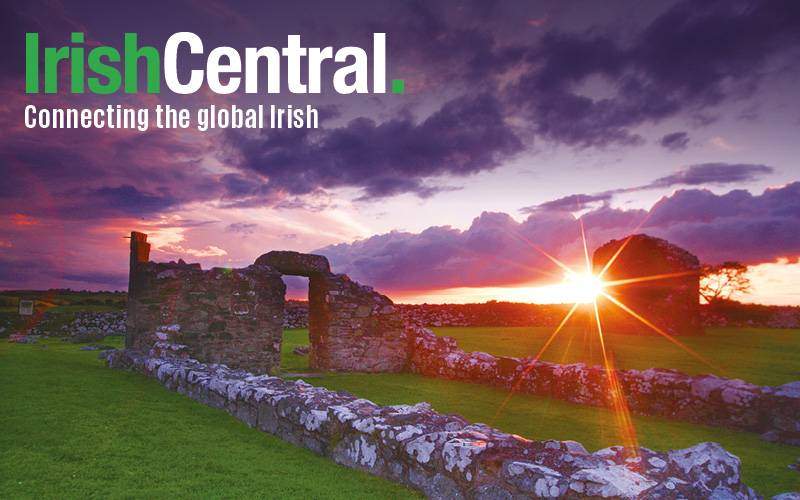By Clodagh McKenna
Irish cooking and baking is world class. If there’s anyone who still doesn’t realize how unforgettable and filled with flavor it is, along comes Irish food superstar Clodagh McKenna in time for St. Patrick’s Day with her distinctive new spin on tradition Irish dishes.Travel broadens Irish minds, but it also enriches their cooking know-how. Trips to France and Italy are often especially profitable, bringing continental flair to the Irish culinary pantheon and to McKenna’s own approach in Clodagh’s Irish Kitchen.
If you’re ever asked to describe what Irish cooking is, McKenna’s answer in this book may be the most straightforward you’ll ever need. “For me it can be summed up as clean tasting, fresh dishes using light subtle flavors to encourage the main ingredients, whether they are fresh fish, aged beef, mountain lamb or herb flavored creamy sauces and butter,” she says.
In McKenna’s book she begins with breads, breakfast recipes and then progresses to suppers. Traditional colcannon is presented as a soup, then woken up with addition of a parsley pesto.
Smoked haddock is thrown into a rich chowder and even good old Dublin coddle (a hearty stew) is given a delicious upgrade with the addition of pancetta and fresh herbs.
There is so much more to discover than soda bread (although that’s nothing to sniff at) or roast lamb. How about a famous Irish breakfast repackaged as a tortilla? For imaginative and completely delicious Irish recipes this book deserves to be on your reading list this spring.
Kyle Books, $29.95.
Ireland’s Harp, The Shaping of Irish Identity
By Mary Louise O’Donnell
Think of what was lost to Ireland by the end of the 17th century. Once the poet, the reacaire (reciteur) and the harper had been the epitome of Gaelic aristocratic culture.But their exalted positions were usurped by the wholesale destruction of that ancient world and by the centuries long campaigns to appropriate and repurpose that most emblematic of Irish symbols, the harp.
Giraldus Cambrenis, a Welsh cleric who accompanied King John to Ireland in the 12th century, set the basic parameters of the colonial rationale that would follow. Irish harpers have the most extraordinary technical and virtuosic skills, he wrote, but he struggled mightily to reconcile their delicacy with the Irish people’s apparent barbarity.
It’s an irony of history that the harp so perplexed English historians and colonial commentators, who wished to bolster the myth of the Irish savage in need of English manners and culture. That English culture was enforced at the business end of a sword or musket was not seen as a contradiction by the writers of the period.
In her immensely scholarly but approachable new work, O’Donnell examines the major social, political and cultural changes in Ireland from 1770 to 1880 as the focus of her study on the Irish harp.
Its revolutionary symbolism is also examined, as well as the way in which the protection and patronage of the Irish harpers passed from the aristocratic Gaelic order to the Ascendency affluent middle classes in Dublin and Belfast.
Along the way O’Donnell races the monumental importance of the harp and the central place it occupied in the formation and expression of Ireland’s ever shifting cultural and national identity.
Dufour, $54.
D’You Remember Yer Man
By Bobby Aherne
Ireland is full of unforgettable oddballs. For proof of this you need only turn to this delightful portrait of Dublin’s most famous characters compiled by Bobby Aherne (with illustrations by Ruan von Vliet).The nicknames themselves are a treasure trove: Annie Fruitcake (she didn’t bake cakes, she got her nickname from being considered nutty as one). Billy in the Bowl (he was born without legs). Crazy Crow (a body snatcher).
This compendium of miscreants, weirdoes and the certifiably insane tells the story of over 100 of the city’s inhabitants, people who made your day a little stranger or more memorable for having passed through it.
Often hilarious, frequently tragic and at all times completely fascinating, they’re an indulgent reminder of the rare old times and the Celtic Tiger era continuity that makes it such a singular city.
Author Aherne has an ideal disposition for the task. Having studied English and Music in NUI Maynooth, he worked in Dublin’s National Leprechaun Museum as a storyteller and folklorist, a perfect background for this quirky and immensely entertaining new book.
Dufour, $16.




Comments